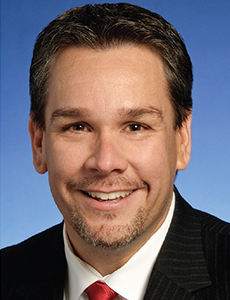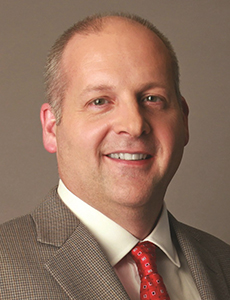2019 Risk All Star: Rodney Escobar
Why Every State Workers’ Compensation Program Should Follow Tennessee’s Example
Since Rodney Escobar took the helm in 2013 as the director of risk management for the State of Tennessee, the state has changed its culture around workers’ compensation, established a return-to-work program and reduced costs by more than 38%.

Rodney Escobar, director risk management, State of Tennessee
When Escobar came into the role, he performed a risk assessment and found the State of Tennessee divisions of claims and risk had few organizational goals with a lack of accountability for risk decisions being made at lower levels across the state.
Workers’ comp programs were incurring nearly $18 million per year and were managed by a TPA and multiple care providers. Employees didn’t have clear procedures to follow on work-related injuries, leading to a lot of out-of-network treatment.
And with outdated legacy technology in place, administrators were accustomed to using manual processes that were prone to error, Escobar said.
Although the TPA had a claims product, few individuals had access to it, and the eight adjusters assigned to the state’s workers’ comp programs had to process more than 2,300 claims per year. The state also didn’t have a pharmacy benefits manager, and the lack of field nurses meant even minor injuries were referred to costly clinics.
“There were no procedures on how to report a work comp claim, they wouldn’t follow up for medical treatment and there was no return-to-work program,” Escobar said. “There wasn’t communication. Sometimes we weren’t notified until 12 months after an injury occurred.”
After four months of speaking with TPA professionals, Escobar developed a strategic plan to improve the state’s workers’ comp programs. This evolved into a five-year plan that incorporated enterprise and strategic risk management for all state entities.
Escobar met with treasury leadership to stress the importance of making risk management a part of daily operations and practices for all state agencies. The treasurer gave Escobar three main goals: to improve customer service, implement technology to improve risk communications and to install risk management best practices throughout state government.
Escobar and his team began meeting with all levels of state government, from commissioners and administrators to human resources personnel and safety and loss control officers, explaining the services they offered in addition to ways they could improve their workers’ comp program.
To break through the barriers of legacy and business-as-usual processes, Escobar had to show credibility and demonstrate it through a plan of action. His plans offered leadership options and recommendations that showed not only administrative costs but potential loss savings.
“The challenge we were facing was that it was done a certain way for 30 years and that was all anyone knew … by showing the numbers, we could open up some of the avenues for us in terms of returning the programs,” he said.
To bring the agency up to date with the latest technology, they issued an RFP and spoke with subject matter experts. The state eventually partnered with CorVel to improve communications, claims management and cost containment services.
Because there was no organized recovery process, employees often stayed home and collected temporary total disability payments (TTD) without any established timeframe on when to return to work. The department piloted a return-to-work pilot program for the Department of Corrections, then extended it statewide in 2015.
Enabling injured workers to return to the workforce by performing job tasks that are compliant with their medical restrictions has helped drive TTD payments for the state from $4.5 million in 2012 to less than $800,000 in 2019 so far.
As trust in Escobar grew, he was able to obtain additional administrative funds to improve other programs such as tort, property, insurance and loss control and safety.
The first two phases of his journey, improvements to the workers’ comp programs and the implementation of the new system to capture the state’s total cost of risk, have now been implemented.
The third phase of making improvements to the tort program has recently been completed as well. The final phase is to focus on statewide loss control and safety, including driver safety and the establishment of accident review committees in each state entity.
“What motivates me is leadership’s buy-in into what we are doing, and they’re really receptive to change … They really support us in the mission we are trying to move forward with in all of our programs, and really trying to improve every time we see something that is not working,” Escobar said. &
____________________
 Risk All Stars stand out from their peers by overcoming challenges through exceptional problem solving, creativity, clarity of vision and passion.
Risk All Stars stand out from their peers by overcoming challenges through exceptional problem solving, creativity, clarity of vision and passion.
See the complete list of 2019 Risk All Stars.










